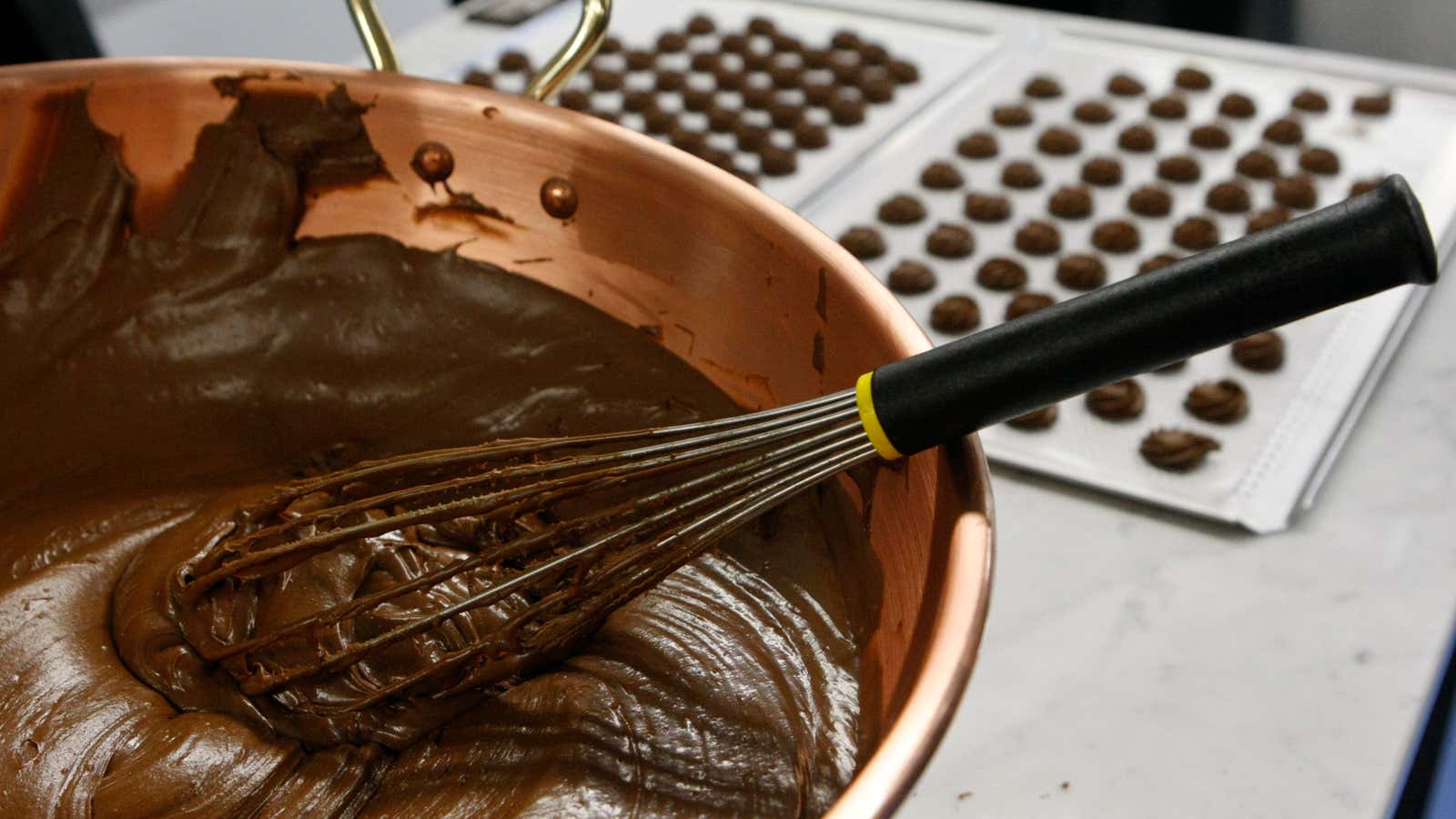People are always eager for good news about chocolate. That made us sitting ducks two years ago, when Harvard science journalist John Bohannon fooled the world by publishing a “study” that showed chocolate could help you lose weight. He watched the fake story and flimsy science get picked up by legitimate news outlets globally before finally confessing that he had conned the media to prove a point about irresponsible science journals and journalists.
With that cautionary tale in mind, I suggest we all take the latest chocolate development—that US Department of Agriculture researchers, in partnership with North Carolina State University, have found a way to boost the nutritional content of milk chocolate—with a grain of (smoked sea) salt. Not because the science is faulty, but because the promised novel form of chocolate doesn’t make milk chocolate a health food.
It’s understandable that researchers would look for ways to give sweeter, more popular milk chocolate a piece of dark chocolate’s good-for-you halo.
Dark chocolate contains more cocoa than milk chocolate, which means it also offers more of the bean’s health-supporting flavonoids. Eating small amounts of dark chocolate consistently—most studies use chocolate made from 70% cocoa—has been found to lower cholesterol levels and improve blood sugar levels in the body, improve mood by reducing levels of the stress hormone cortisol, and boost heart and brain function. The polyphenol epicatechin in cocoa is a particularly potent antioxidant known to improve blood flow by prompting blood vessel cells to release higher amounts of nitric oxide. (For this reason, eating dark chocolate could even enhance your workout.)
In order to try jack milk chocolate’s healthfulness factor, the scientists added an ingredient that doesn’t sound immediately appealing: extracts of discarded peanut casings, a waste product of the peanut industry.
Added to milk chocolate, the peanut skin extracts bring with them phenolic compounds that offer antioxidant properties similar to that of dark chocolate. “The compounds in peanut skins are the very same ones found in other sources such as cocoa, tea and cranberries; that is catechin, epicatechin and procyanidins,” says Lisa Dean, food technologist and lead author of the study. The scientists encased the peanut skins in the starchy food additive maltodextrin, which camouflaged their flavor, making the difference between treated and untreated milk chocolate undetectable in the study’s 80-person blind taste test. (They have not yet tested the dosed chocolate with people who have peanut allergies.)
“There are published studies that have shown that extracts from peanut skins are anti-inflammatory in cell culture, have cholesterol lowering effects in rats, and have antioxidant effects in chemical tests,” Dean adds, noting that, “if the compounds themselves are the cause of the health effects, then the effects will be the same, regardless of the food source.”
So could the new enriched milk chocolate be as healthy as dark chocolate? Not really. Yes, it would offer the same antioxidant levels, but it would still contain higher amounts of sugar and milk solids than dark chocolate. Then again, dark chocolate bars can also contain larger than recommended amounts of sugar, too, and that refined sweetener, which has been tied to its own, much more elaborate publishing scandal, is worse for us than we knew.
Cue the “salad cakes.”




